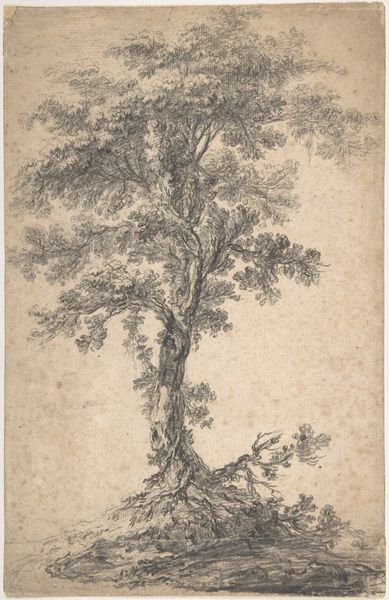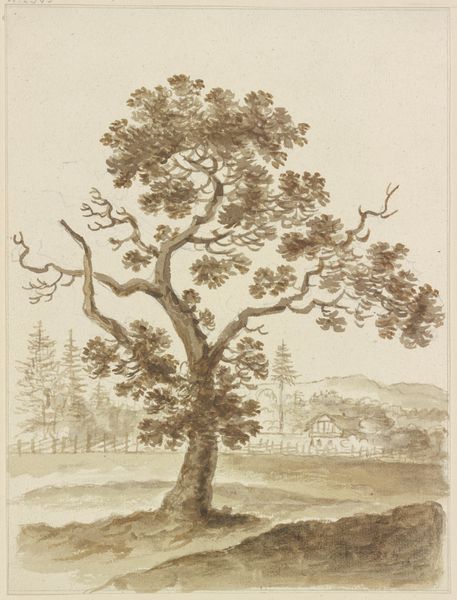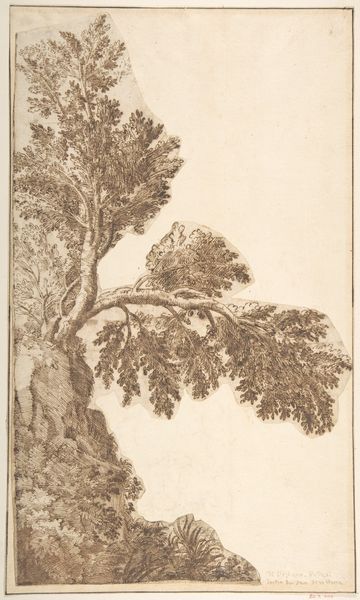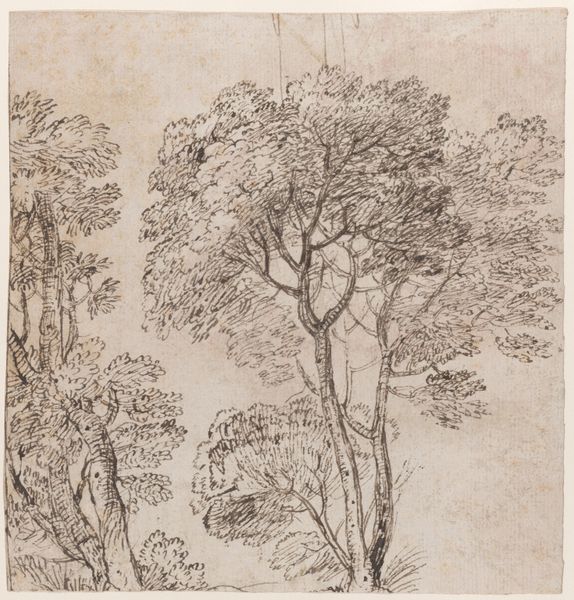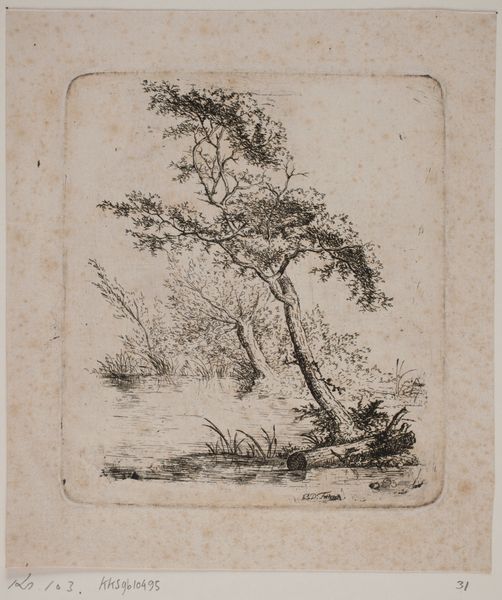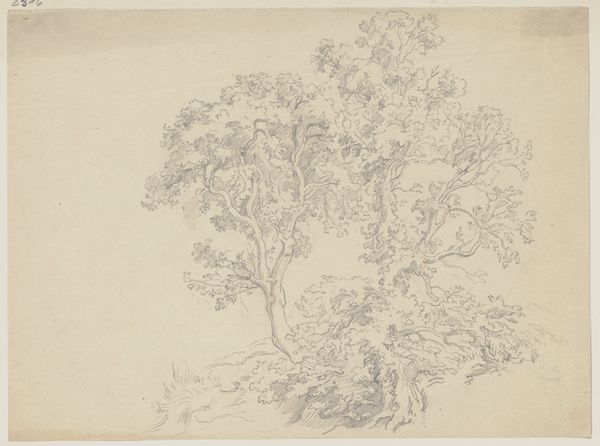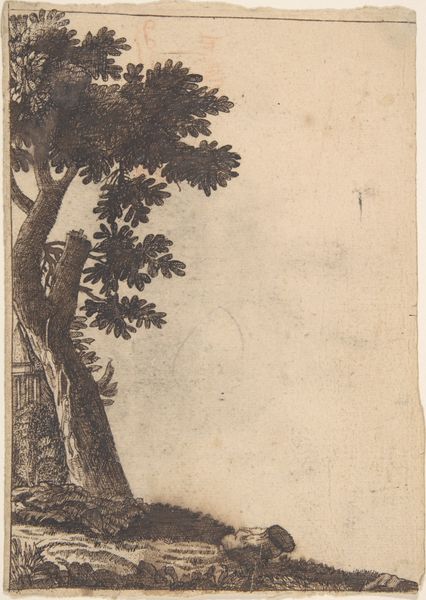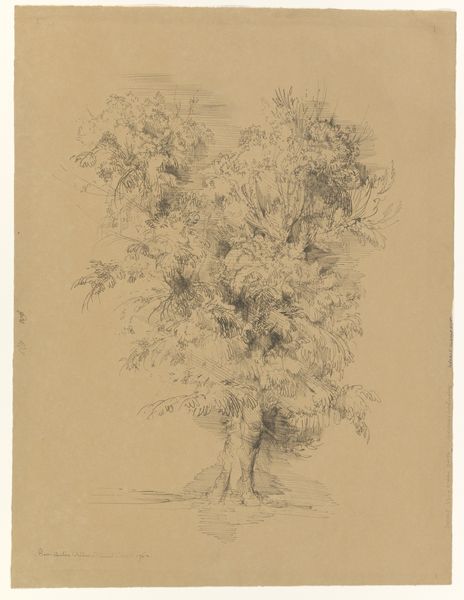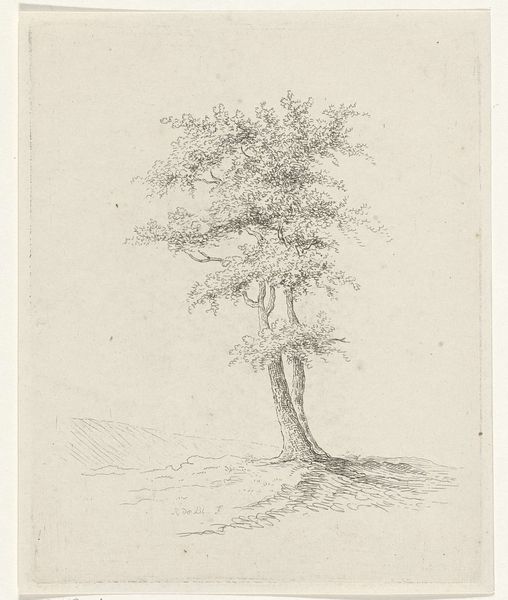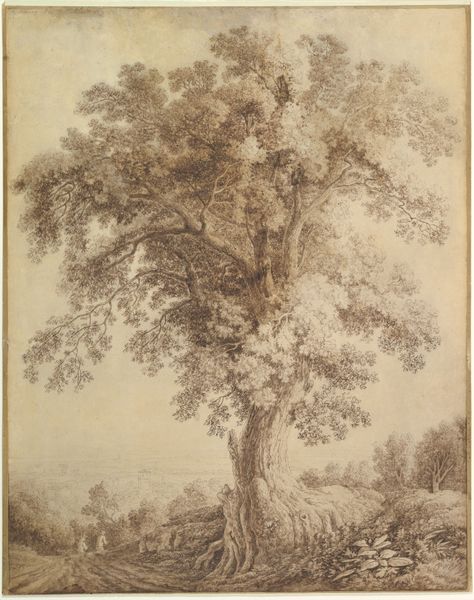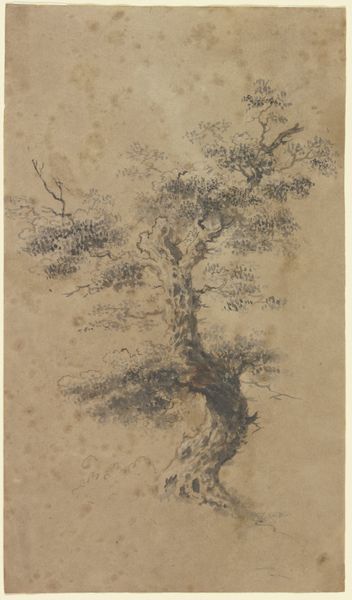
drawing, print, paper, ink
#
drawing
#
baroque
# print
#
landscape
#
etching
#
paper
#
ink
#
ink drawing experimentation
#
pen-ink sketch
#
line
#
realism
Dimensions: Sheet: 9 3/16 in. × 8 in. (23.4 × 20.3 cm)
Copyright: Public Domain
Curator: Let's delve into Nicolas Poussin's "Study of a Group of Trees," dating from sometime between 1620 and 1655. It’s currently housed at the Metropolitan Museum of Art. The piece employs ink on paper and exists as an etching print. Editor: It's quite stark, isn't it? The skeletal lines of the trees against the pale paper create a somewhat melancholic atmosphere. A raw quality suggests transience. Curator: That resonates deeply, I think. Trees, across cultures, serve as enduring symbols of life, growth, and resilience. The seemingly bare nature in Poussin's study emphasizes a kind of raw existence, a connection to fundamental natural cycles. One can appreciate, here, the influence of classical forms as nature became idealized for visual art. Editor: I see a certain social element present. Poussin lived through significant social upheaval. Think about the backdrop of the Thirty Years' War. Perhaps the etching serves as a reminder of the fragility of societal structures—those trees weathered storms. I can also trace lines connecting ecological awareness as a modern lens through which one might read such work. Curator: Yes, there’s a stark beauty, unburdened by embellishment. The artist focuses on essential form, capturing an honest portrait of these trees, un-romanticized, rooted to their terrain. This very “ordinariness” echoes something deeply ingrained in the Baroque’s sensibility about existence itself. Editor: Considering how the representation of landscapes shifted during Poussin's time, what kind of commentary, if any, could be seen? The aristocracy controlled access to land—nature depicted and viewed through the lenses of property and power. Curator: Interesting perspective. We often find within Poussin a reconciliation of reality with underlying patterns of universal form. What remains relevant through the artwork’s various recontextualizations is perhaps its reminder of humanity’s connection to and continuity within nature itself. Editor: Ultimately, it prompts reflection. Its stark lines and simple execution carry significant conceptual weight. A poignant meditation on existence itself.
Comments
No comments
Be the first to comment and join the conversation on the ultimate creative platform.
